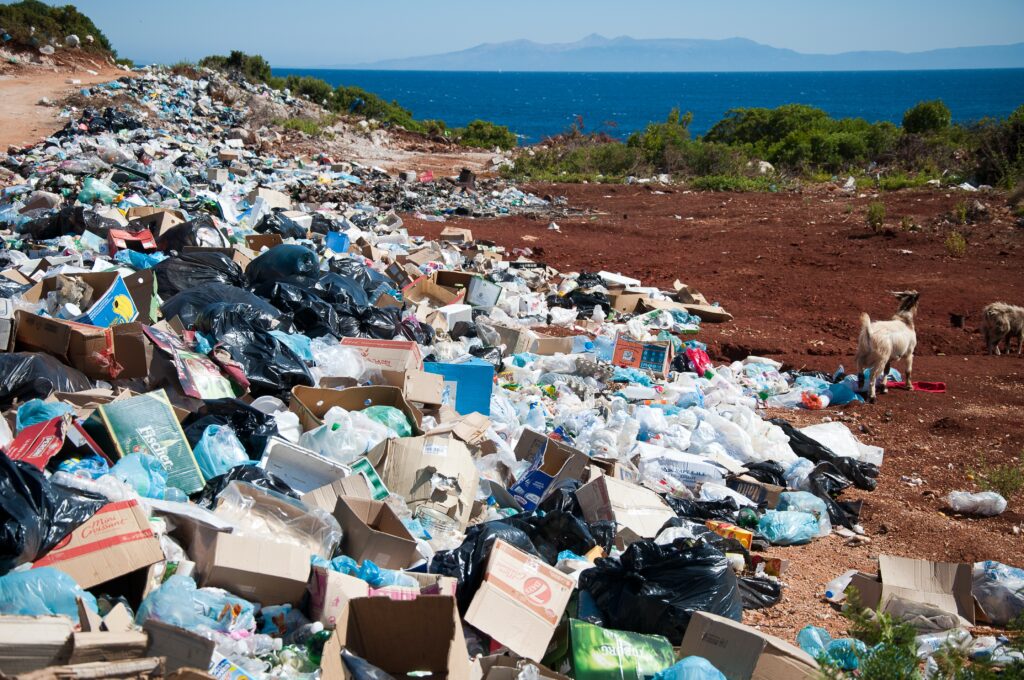Plastic has been an integral part of packaging for decades but its reputation is continuously brought into question. Plastics have been known for their high environmental impact as they are produced via an energy-intensive process that emits large amounts of greenhouse gasses. Statistics show that plastics alone contribute towards 3.4% of global greenhouse gas emissions during their lifecycle. In 2019, 22 million tonnes of plastic leaked into the environment and it’s estimated that this waste will increase to 44 million tonnes by 2060. How do we ensure that these numbers don’t double, as they’re estimated to, in the near future? Put on paper, the answer is simple: we need to drive change. But how do we put these plans into action, especially in the packaging industry where plastic has traditionally been used as a fail-safe?

Beating plastic pollution
Plastics have garnered an ill reputation and the spotlight on sustainability in recent years has also shed light on why plastic’s reputation needs to be changed. They became a popular option in the packaging industry as they are lightweight, secure, versatile and durable. But the call for packaging companies to reduce their dependence on environmentally degrading options has created a shift in the outlook on plastic. Companies like GPA Global founded their packaging solutions on the goal of offering their clients more eco-friendly products and services. Their approach has led to a decrease of 33% in greenhouse gas emissions per unit and end-of-life landfill potential by 35% in one of their client case studies.
Offering an alternative to plastic can alleviate the impact on the environment while still maintaining the benefits of plastics such as durability and convenience. Materials such as bamboo, glass, sugarcane bagasse, mushroom packaging and corrugated cardboard may be viable options that can benefit brands and the environment. If your product still needs a material that looks and feels like plastic, bioplastics could be the answer. They’re made from sugars derived from corn and sugarcane. However, packaging experts at GPA Global warn that bioplastics can still contribute to the same amount of pollution as traditional plastics if they’re not disposed of correctly. If they end up in landfills or recycling, it may still be a challenge for them to break down even though they are biodegradable.
Is recycling enough to fix the issue?
It’s not just the production of plastic that is an issue. When companies talk about recycling as an easy solution to fix the damages of plastic pollution, they miss out on fixing the real problem. Recycling alone cannot put an end to the devastating environmental impact. And the truth is that only a fraction of plastic is recycled. Landfills will continue to overflow with the increase in new and unrecycled plastic production.
Research shows that when microplastics eventually break down while in these landfills, they potentially release dangerous chemicals such as dioxins, mercury and polychlorinated biphenyls (BCPs) which pose a threat to human and animal health as well as crops and vegetation. So while you may not be directly affected by these emissions, the food which you consume could be. And as we consume them over time, the contaminants accumulate in our bodies, potentially having a negative effect on our health, for example, increasing the risk of chronic inflammation.
Additionally, only some waste from landfills is incinerated. The United States Environmental Protection Agency (EPA) found that only 16% of waste was incinerated in 2018. While this process is still not the best solution because inefficient incineration could also lead to chemical leakage, it can be used to convert waste to energy that can be used to generate heat, electricity and hot water.
The other issue with the plastic manufacturing industry is that in a lot of cases, plastic manufacturers play on the idea of recycling to frame the use of plastics as acceptable. The truth is that most plastic that is claimed to be recyclable isn’t in fact recycled. Multi-million dollar campaigns spread the message that it’s acceptable to use as much plastic as is currently being used instead of addressing the issue at the root. This is what makes the situation detrimental.
Plastics have different functional properties so the feasible solution may not be to get rid of them completely and immediately. What companies do need to look at is the amount of plastic they’re using and how they can reduce it so that each product is optimally packed. Improved technology and designs can contribute to better sustainable packaging solutions that will reduce the amount of waste in landfills and the subsequent pollution.
Will plastic be rebranded?
Plastics still play an essential role in our lives. They are used to ensure safety, especially in the food industry where they are used to ensure food is kept sanitary.
The solution isn’t simple and cannot be done in one step. However, companies do need to realize that they can still make a difference if they use an iterative approach to sustainability. When seeking out a packaging solutions manufacturer it’s important to check their processes and not just the materials they use. A reputably sustainable company will focus on their entire supply chain to ensure resources are eco-friendly and ethical, government and environmental regulations are met, carbon emissions are reduced and inventory and waste are also reduced. You’ll want a manufacturer that can offer you holistic solutions to your plastic requirements, not one that pushes a disguise of recycling to absolve their practices.With that being said, plastic may never be rid of its waste reputation but with manufacturers like GPA Global on the frontlines of sustainable solutions, the planet is guaranteed that there will always be a better and more eco-friendly solution.

